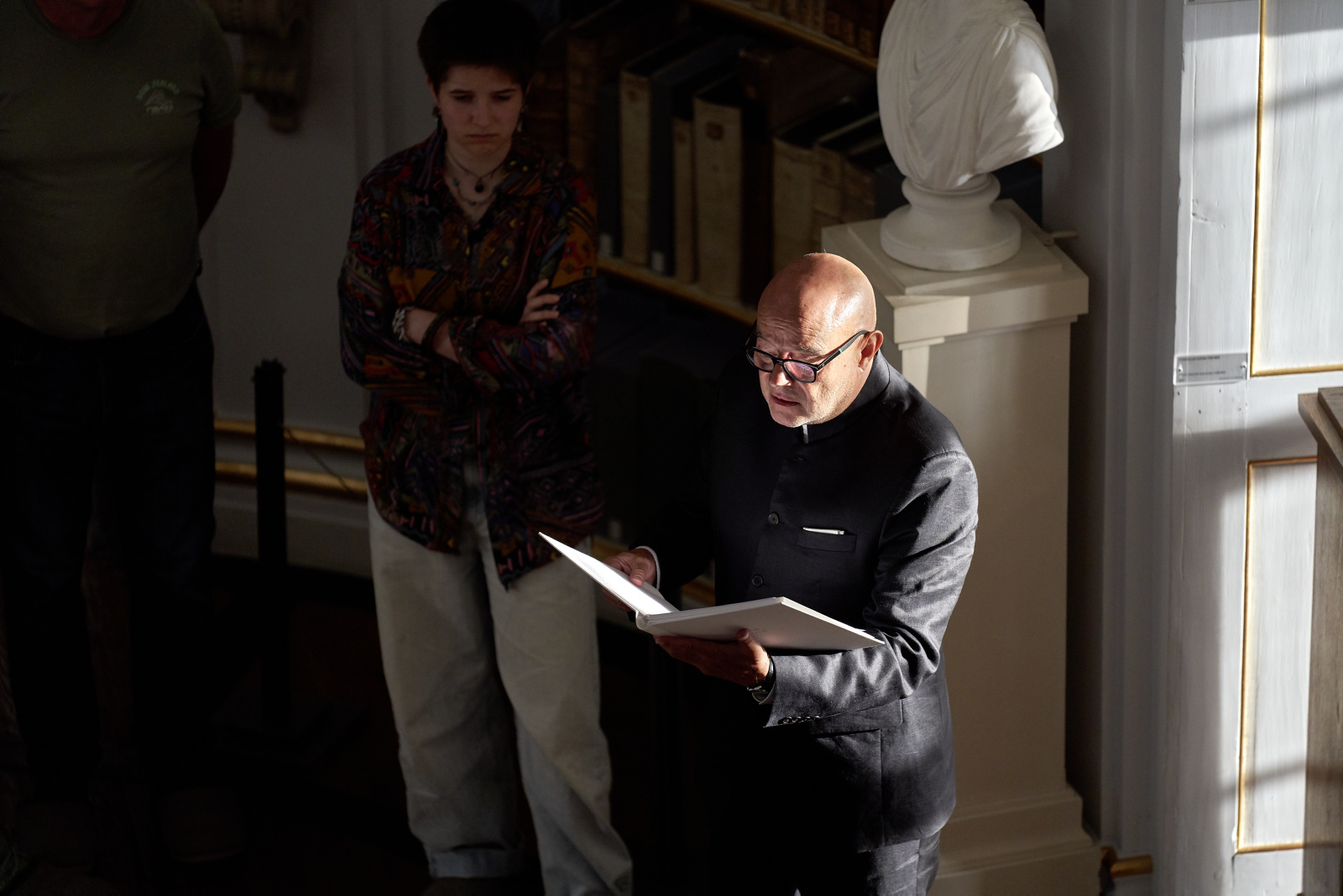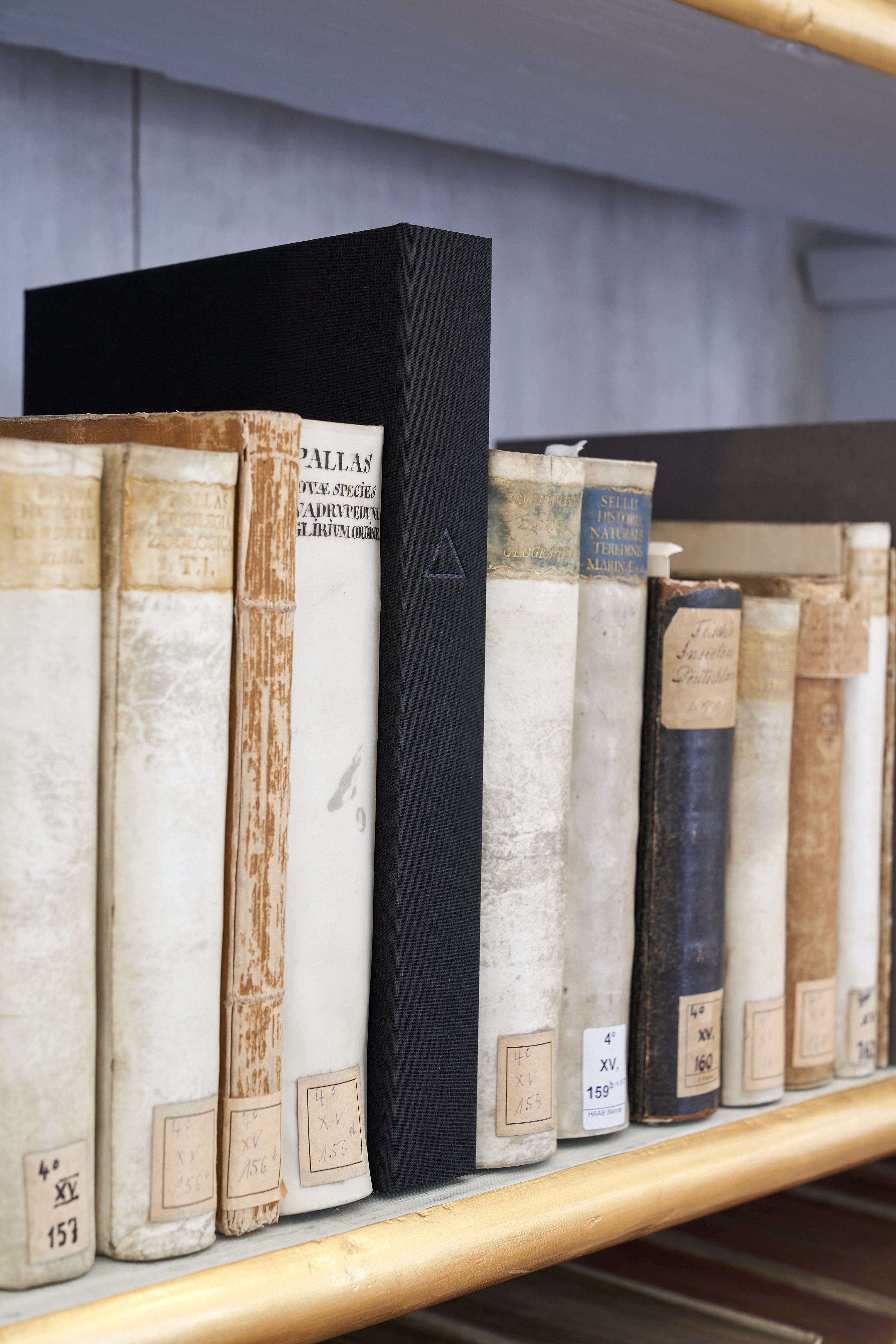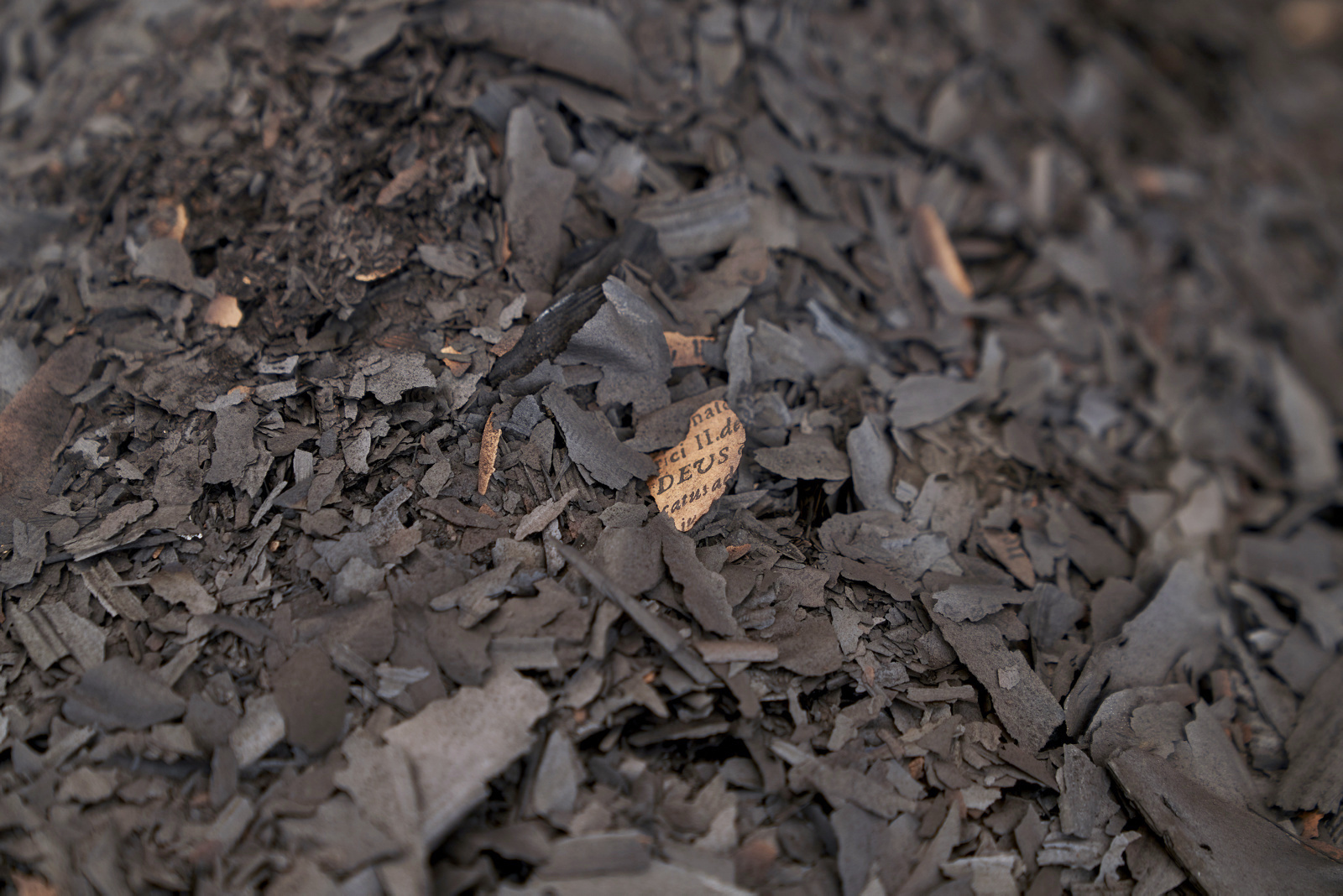Ars Ignis.Die Poesie der Zerstörung
Weimar, 2024
Book Ashes and Fragments of burned booksHerzogin Anna Amalia Bibliothek, Klassik Stiftung Weimar
Project: Ars Ignis. The poetics of destruction
On 2 September 2004, the Green Palace in Weimar, where the Duchess Anna Amalia's Library (HAAB), a Unesco World Heritage Site, is located, went up in flames. Its citizens saw how a spark was capable of destroying not only one of the most beautiful libraries in Europe, but also part of its artistic, literary, and musical heritage. Their reaction was masterful. This heritage catastrophe shook the world, as did the fire that stalked Notre Dame de Paris Cathedral in 2019. It took three years for the building to reopen to the public, and twenty years later, restoration work and the recovery of the books are still ongoing. Among all the material archived after the fire, there are books and fragments that, for the moment, have not been restored or identified. In 2019 I had the opportunity to visit the storage rooms and the restoration department where this material, as valuable as it is fragile, is being worked on. I realized that there is a place where science can no longer reach, and where the language of art could bring new possibilities.


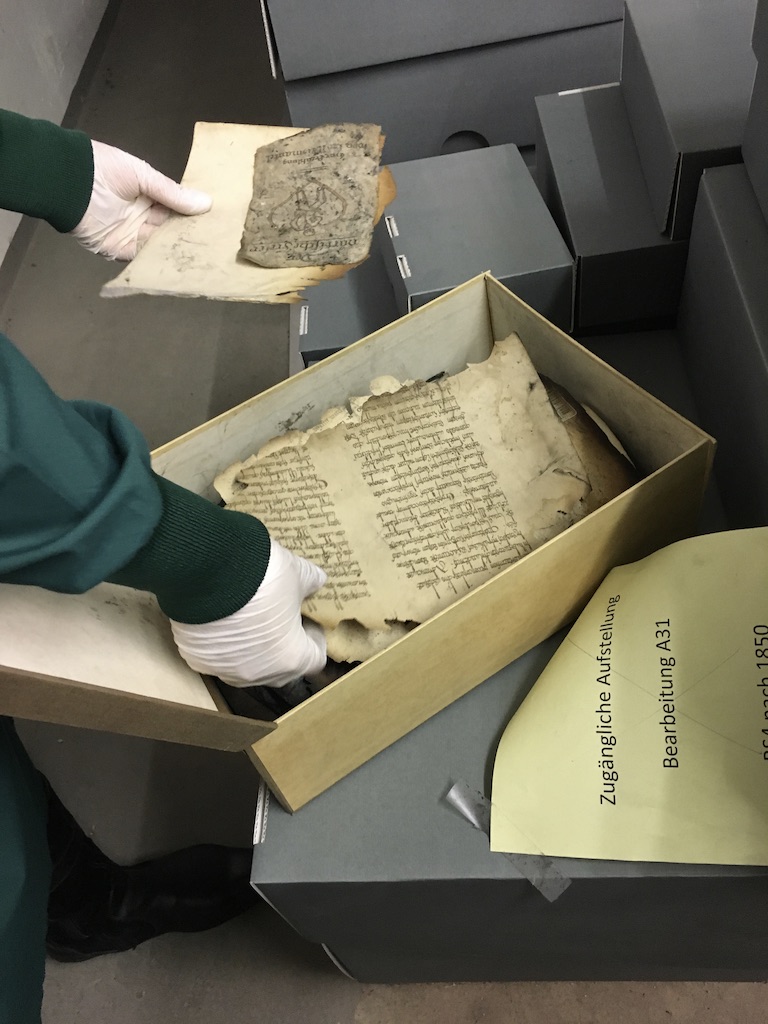

Ars Ignis, in Latin, refers to fire as a creative element. That fire of which Heraclitus speaks, builder and destroyer. The same fire that creates culture and that is preserved in the hearth, in the house, in the first refuge. That fire of alchemy, capable of melting metals, which sculpture uses to give form. The same fire that, without control, is capable of destroying everything to the point of turning it into nothing. Integrating with its force almost any matter into the cycle of life. The second part of the title ‘The Poetics of Destruction’ alludes to the aesthetics of ruin, to its existential contemplation, to its cult, which only arises with the sufficient temporal and physical distance that separates us from the pain of loss and damage, so typical of German Romanticism.
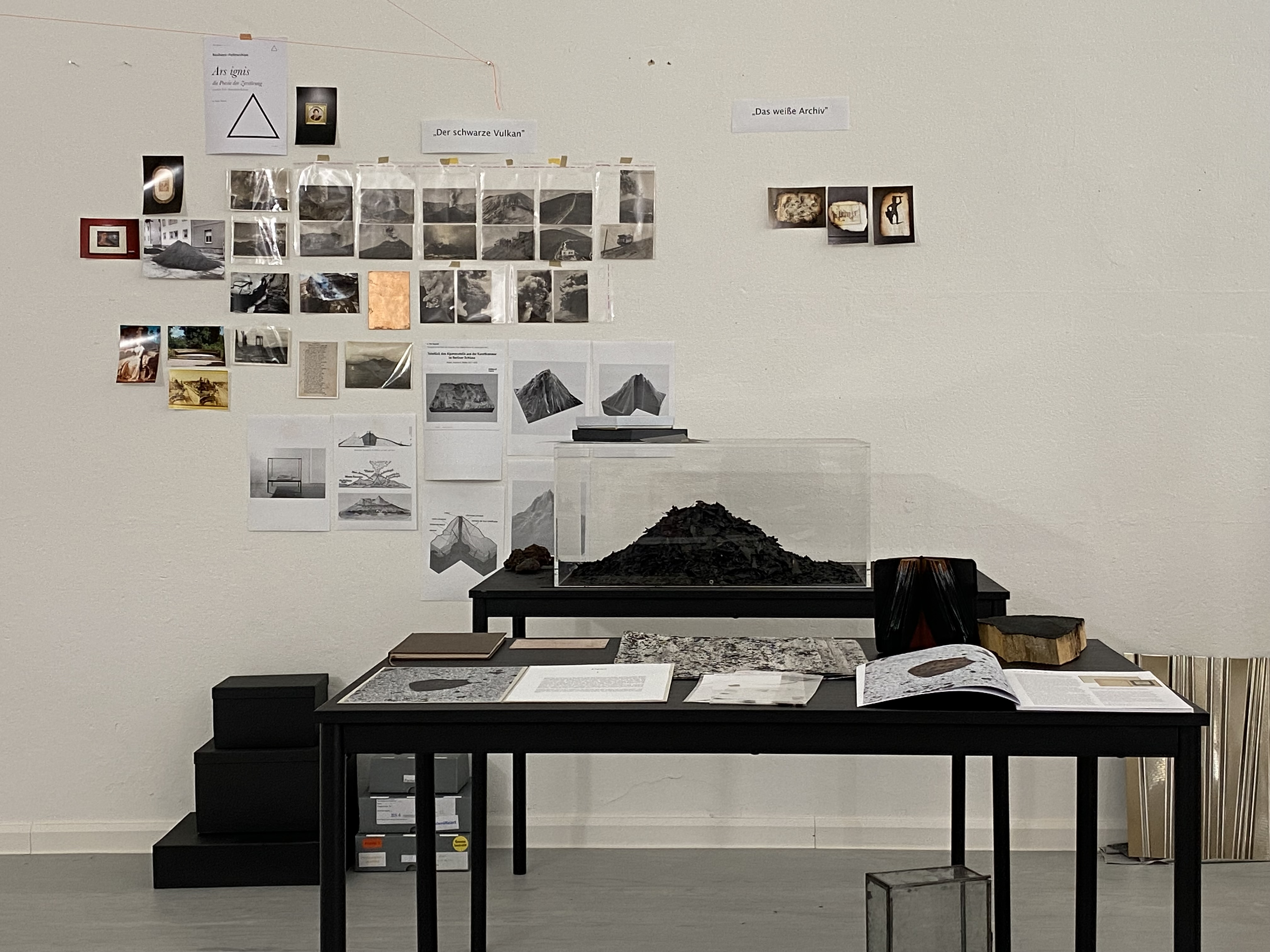
The project consists of two parts: ‘The black volcano’ and ‘The white archive’. Each of them is designed for each of the library's two current locations. The first is located in the Rococo room of the historic building built between 1562 and 1565, where the library was founded in 1691 by Count Wilhelm Ernst of Saxe-Weimar and burnt down in 2004. And the second in the new library, in the Study Centre (Studienzentrum), which was opened in 2005 and designed by the architects Karl-Heinz Schmitz and Hilde Barz-Malfatti.
The main idea of Ars Ignis is to offer new meanings to some of the fragments of the books, repairing them in another way. Coinciding with the 20th anniversary of the HAAB fire, a dual intervention was proposed, in which to use the material informed, ashes, and fragments of the burnt books. A material is as close to waste as it is to the relic.
The main idea of Ars Ignis is to offer new meanings to some of the fragments of the books, repairing them in another way. Coinciding with the 20th anniversary of the HAAB fire, a dual intervention was proposed, in which to use the material informed, ashes, and fragments of the burnt books. A material is as close to waste as it is to the relic.
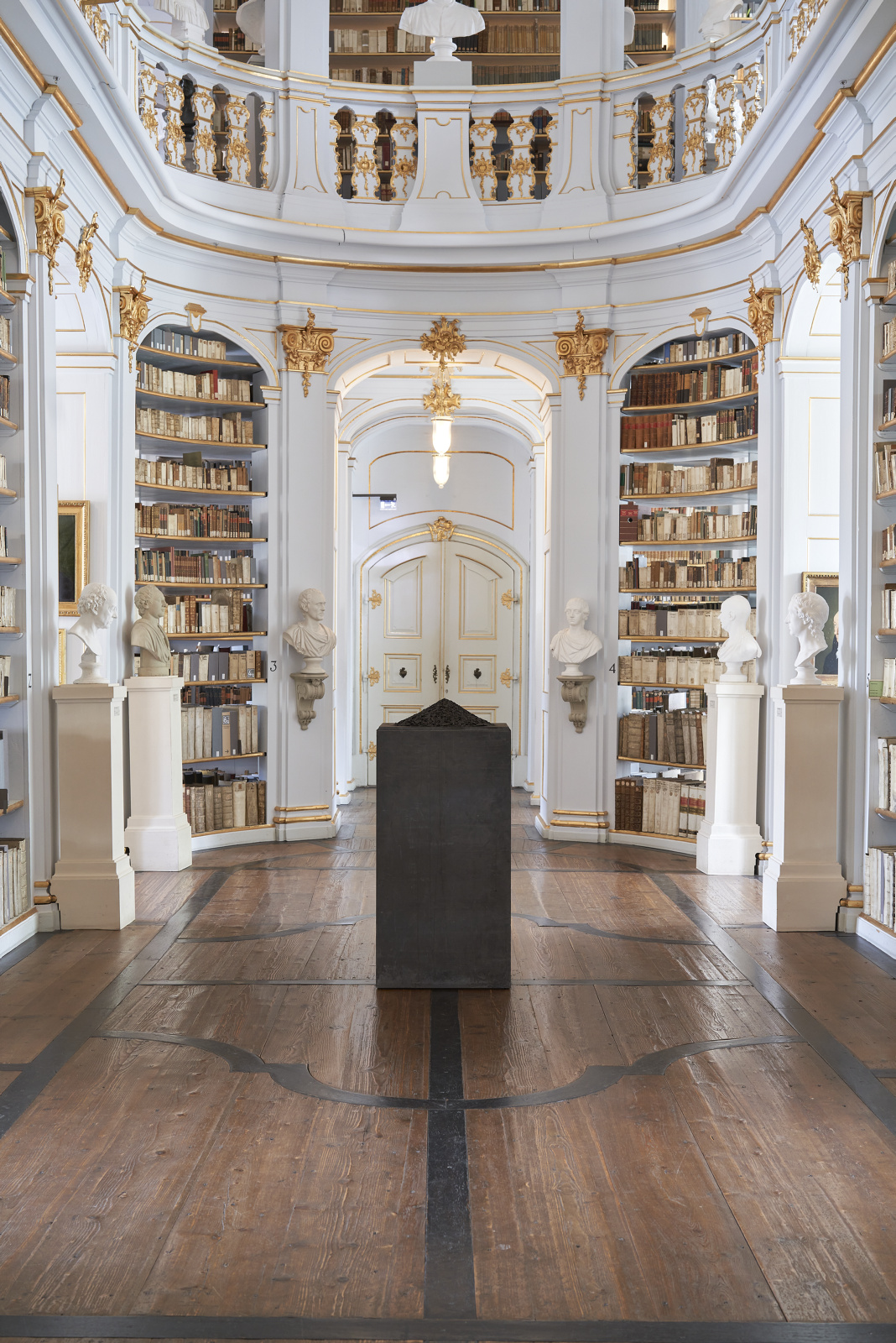
‘The black volcano’ is a small mountain of ashes from books that have been burnt. This sculpture has been placed on a plinth covered with lead. These ashes were collected in the restoration workshops. They are small fragments of burnt pages that were detached from the books during their handling in order to be restored and recovered. Fragments of words appear in some of them, in others it is impossible to read any of the contents. The piece rests quietly in the middle of the room, in the central axis, also corresponding to the center of the oval balustrade that crowns the space. This piece, conceived as a small mausoleum, took the form of a volcano, to link two historical strata: the story of the library fire with the travels of the Duchess Anna Amalia to Italy.
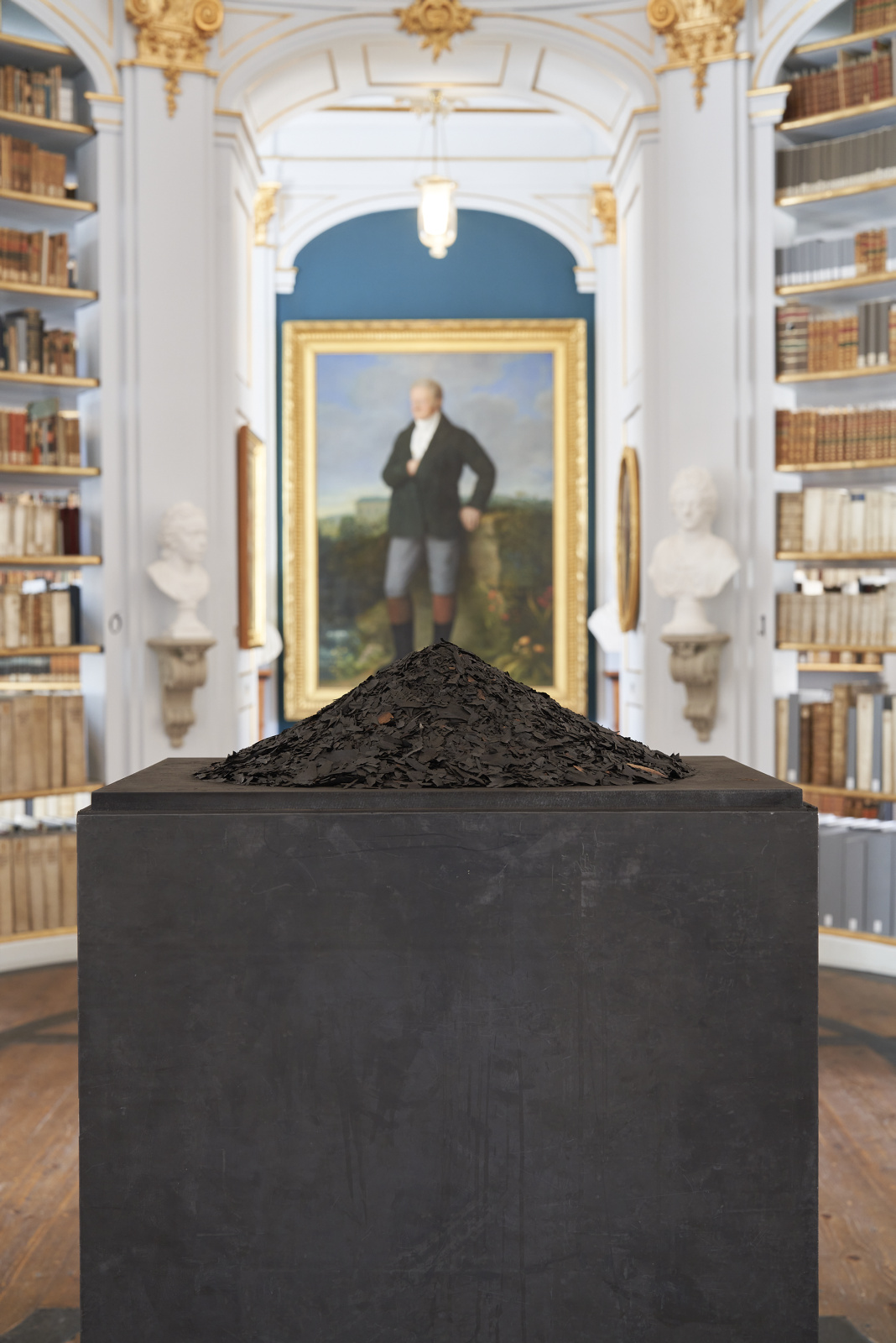
Her fascination with Pompeii and Vesuvius. Anna Amalia was among the first women to embark on the Grand Tour. This is recorded in the diary of her lady-in-waiting Louise von Goechhausen. The volcano is accompanied by adjacent showcases in which elements from the Goethe and Schiller archives are presented. In them, visitors will find the Duchess's passport, watercolors by Johann Wolfgang von Goethe of Mount Vesuvius, drawings by the German painter Johann Heinrich Wilhelm Tischbein of the tomb of the Mammia Priestess, who painted the Duchess seated on the Schola, or circular bench, which presides over this funerary monument at the Herculaneum Gate.
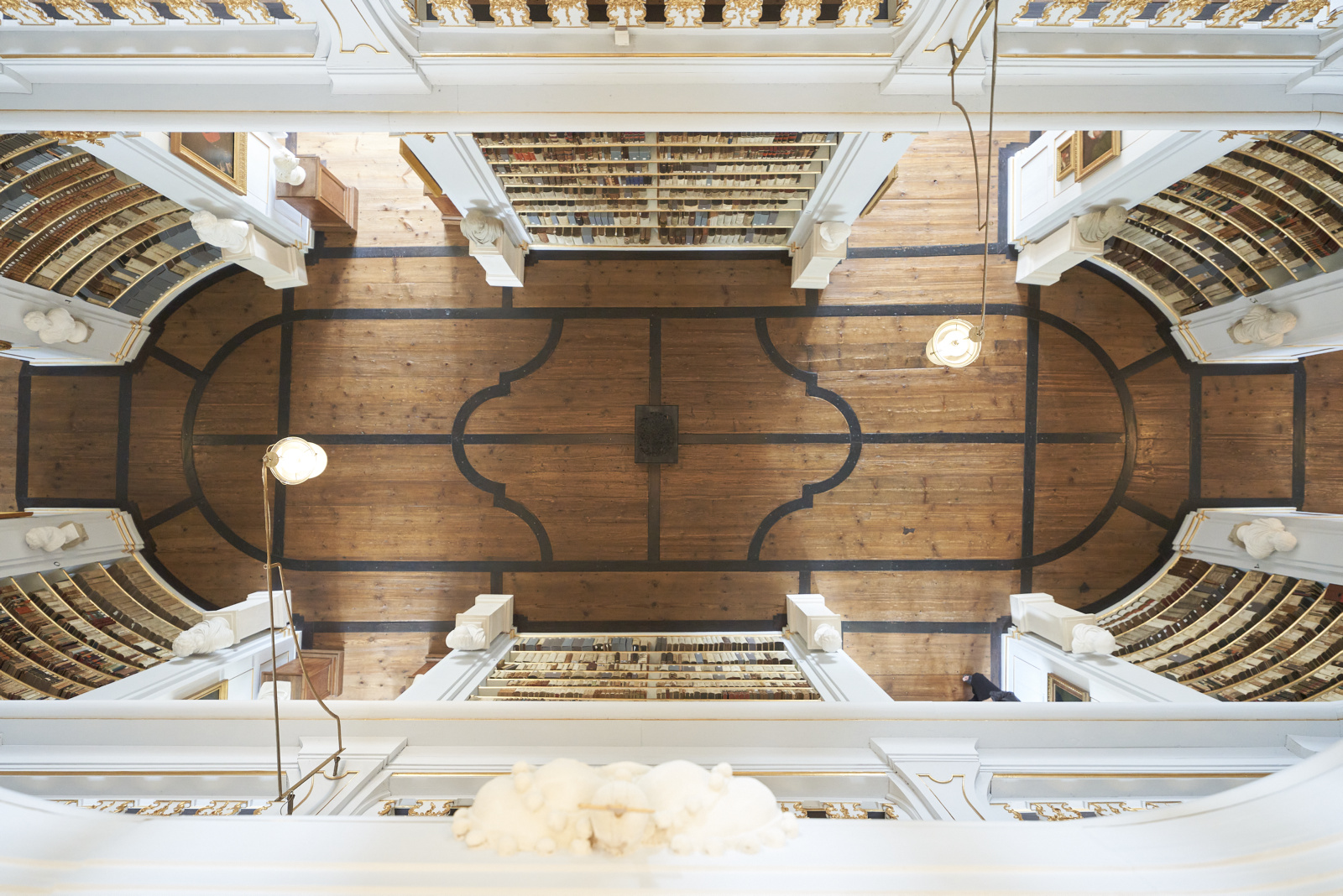


The ‘white archive’ consists of a cupboard with ten drawers, which has been placed in the middle of the central room of the new square library building. In each drawer are 10 pages that survived the fire, together with new stories. The material used for this piece is a small selection of the thousands of fragments of books that could not be restored and were selected from the extensive archive created by the restorers. To develop this literary and artistic piece, ten international writers were invited to write new stories. Among them were Alberto Manguel, Sonia Gentili, María Sánchez, Volha Hapeyeva and Javier Maderuelo. This piece is based on the joy of the discovery of the fragment and the freedom that archaeology sometimes offers.
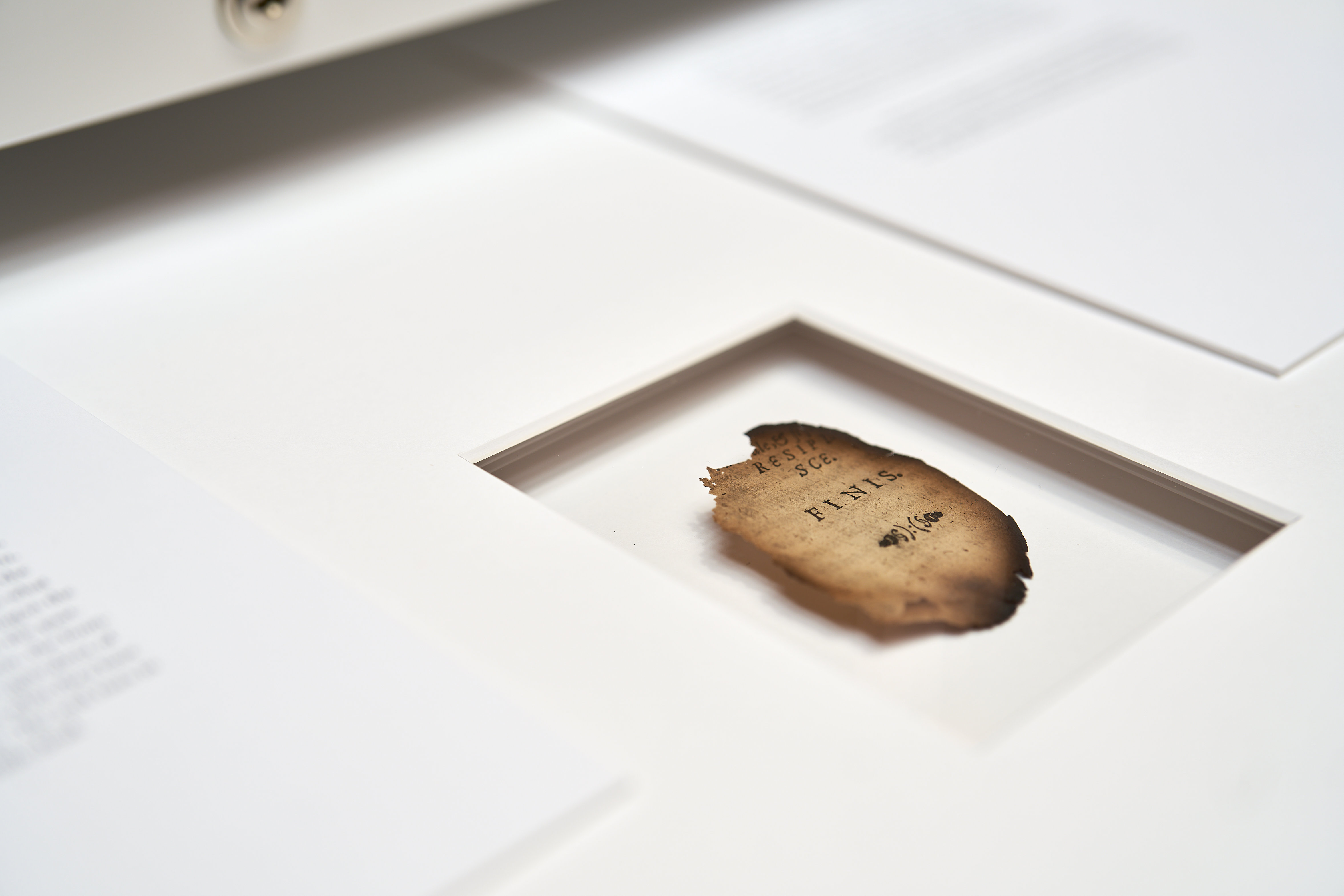
Authors and Texts
Javier Maderuelo “El Cenotafio de Rhodine”
Sonia Gentili “Frammento della città”
Pablo Fidalgo “Mapa”
Dilber Macit “Sen Gittin Y a”
Stefan Petermann “Geschichten von Inseln die verschwinden”
María Sánchez “Diálogo entre las flores y un (solo) corazón”
Volha Hapeyeva “Анатомія сняжынкі Шасцікутныя мініяцюры”
Daniela Danz “Displaced Paper - displayed order”
Ramona de Jesús “Manual arqueológico del hambre”
Anna Talens “El volcán negro”
Javier Maderuelo “El Cenotafio de Rhodine”
Sonia Gentili “Frammento della città”
Pablo Fidalgo “Mapa”
Dilber Macit “Sen Gittin Y a”
Stefan Petermann “Geschichten von Inseln die verschwinden”
María Sánchez “Diálogo entre las flores y un (solo) corazón”
Volha Hapeyeva “Анатомія сняжынкі Шасцікутныя мініяцюры”
Daniela Danz “Displaced Paper - displayed order”
Ramona de Jesús “Manual arqueológico del hambre”
Anna Talens “El volcán negro”


María Sánchez “Diálogo entre las flores y un (solo) corazón”


Dilber Macit “Sen Gittin Y a”
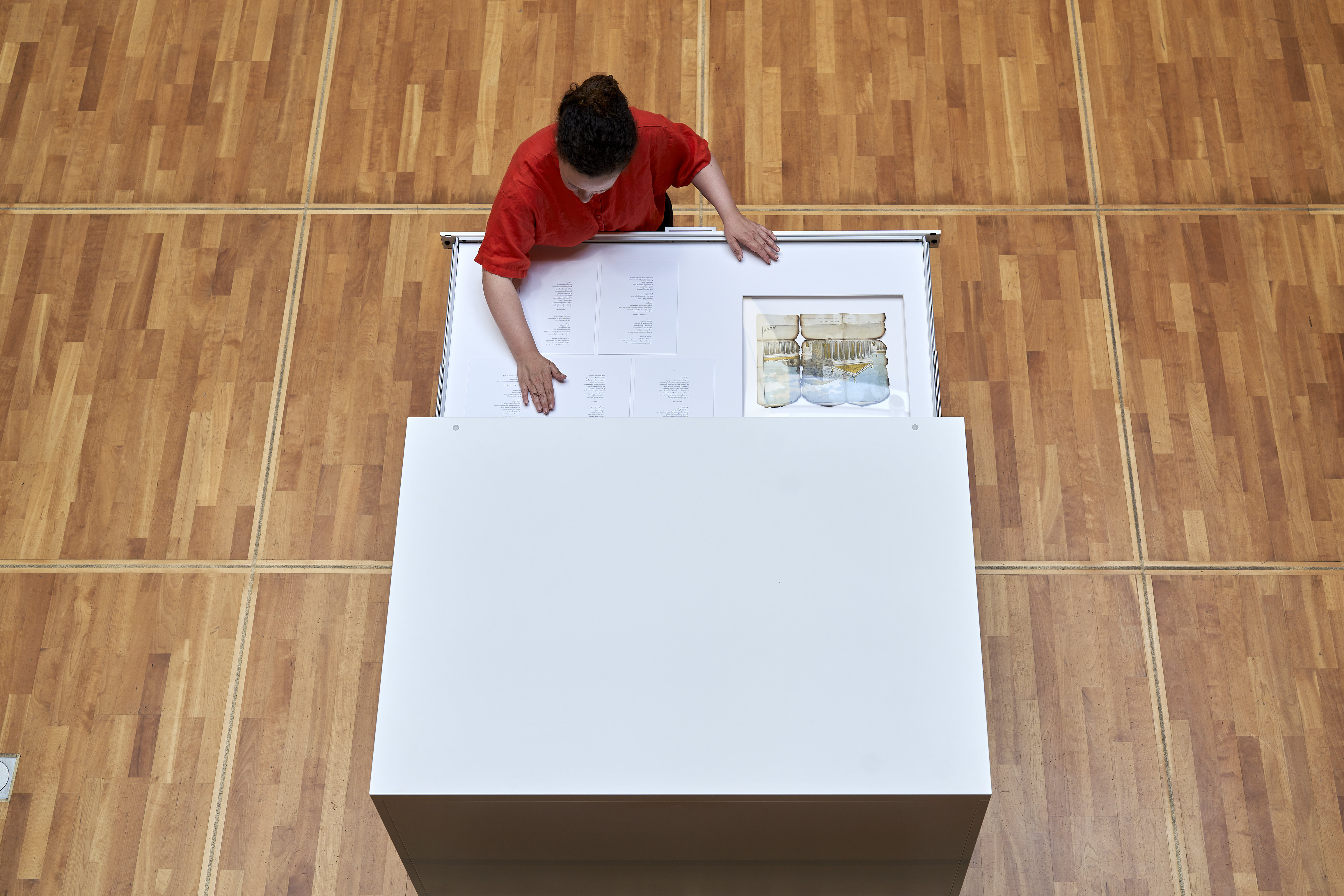
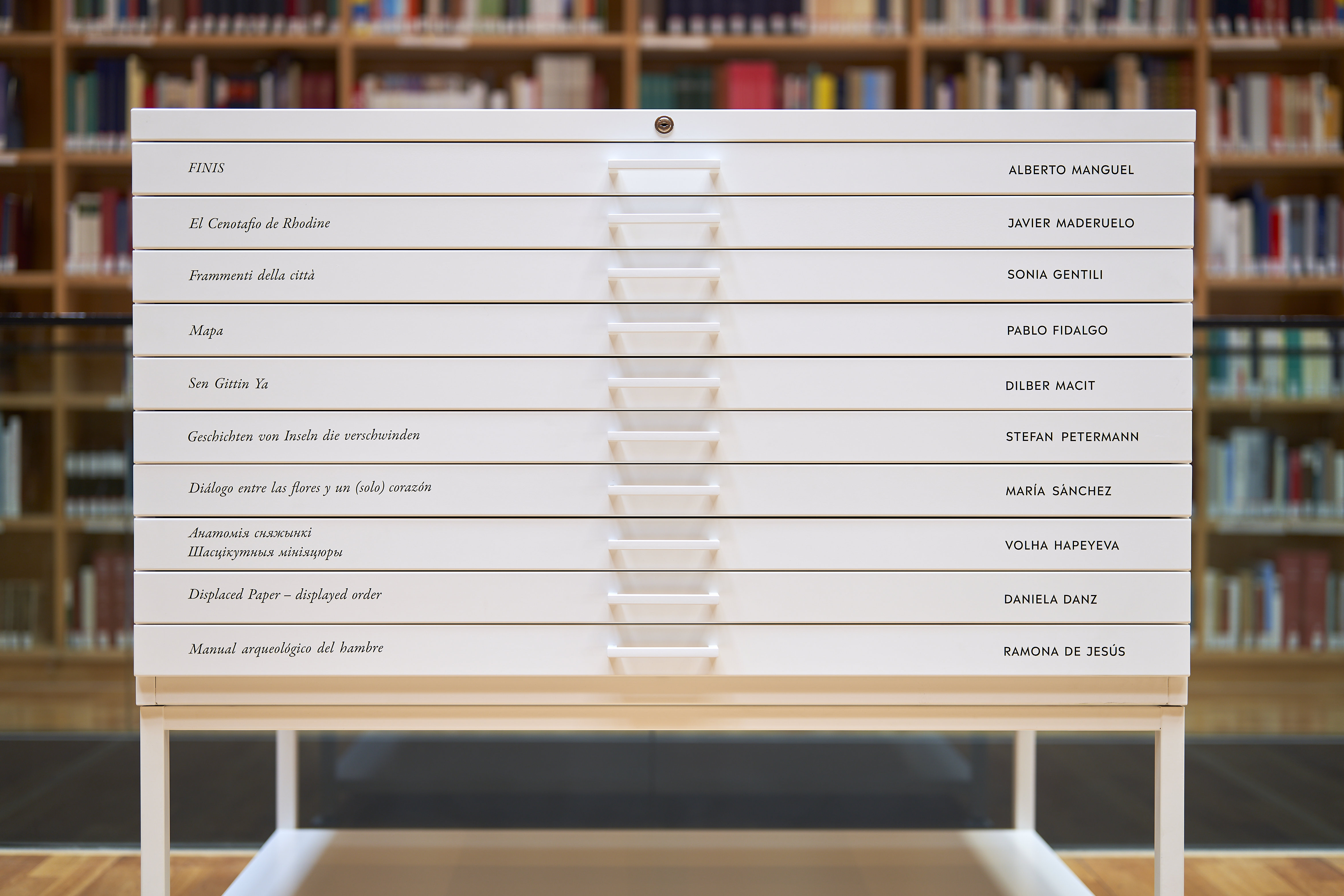
The project is completed with a performative reading by the actor Steve Karier and an object book that will be part of the Library's collection.
